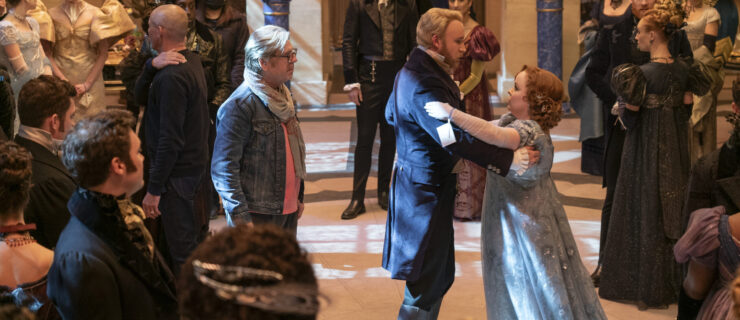Choreographer's Collage: Al Blackstone
Al Blackstone is one of the fastest-rising choreographers in the industry, creating one successful piece after another. After making his Broadway debut as a dancer in Wicked, Blackstone won the 2011 Capezio A.C.E. Award for Choreographic Excellence, which gave him the opportunity to direct and choreograph a full-length production, Happy We’ll Be. For the last three years, he’s worked as Sonya Tayeh’s associate choreographer, and his work, which often has a musical-theater slant, has also been featured on “So You Think You Can Dance.” DS caught up with Blackstone to see what inspires his thoughtful and dynamic choreography.
“Jason Parsons made me want to become a dancer. I left high school in New Jersey early on Tuesdays and Thursdays to go to NYC and take his class at Broadway Dance Center.”
Blackstone with Jason Parsons (courtesy Al Blackstone)
“Matthew Bourne’s Swan Lake changed my life. I saw it three times. It made me want to be a choreographer, and showed me what was possible in storytelling without dialogue.”
Mathew Bourne’s “Swan Lake,” performed by New Adventurers (Bill Cooper, courtesy Raw PR)
“Just before the A.C.E. Awards, I was performing in Wicked on Broadway. The girls in the dressing room were always talking about online dating—it was starting to get really big around then. My work is usually derived from things happening in my personal life. So when I was creating my A.C.E. Awards piece, I was inspired by the dressing room conversations—and by the fact that I’d just fallen in love.”
Ryan Kelly (courtesy Al Blackstone)
“My full-length piece, Happy We’ll Be, explores the highs and lows of our universal search for happiness. I used music and dance from lots of different genres, and the stories that unfolded reflected the joy of connection to the world and to each other.”
“I knew early on that I wanted the venue for Happy We’ll Be to be the Roseland Ballroom in NYC, and was ecstatic when it was presented to me as an option. It has a certain rawness and history—there are ghosts within that space. My parents used to go there all the time. My dad was a ballroom dancer, and I grew up listening to stories about his times at Roseland.”
Blackstone’s parents at the Roseland Ballroom (courtesy Al
“When creating Happy We’ll Be, I had a giant queue of songs I wanted to use during the production. ‘Hyperballad’ by Björk was one of them. To me, it represented a return to my contemporary roots. And I was set on ending with Louis Armstrong’s rendition of ‘La Vie en Rose.’ I’d also wanted to use ‘Chicago’ by Sufjan Stevens, but had to cut it because it just didn’t fit.”
Matthew Murphy (courtesy Al Blackstone)
“’SYTYCD’ was a crash course in trusting my instincts. The routines I created for Season 12 were exercises in making quick decisions. Nine times out of 10, your gut is right. For Jaja and Ricky’s routine to ‘Let’s Face the Music and Dance’ by Nat King Cole, I knew I wanted Jaja’s character to be bold and feminine. She’s an amazing actress, so she played the feisty wife of a smooth-talking mobster perfectly.”
Jaja and Ricky performing their routine (Mike Yarish/FOX, courtesy Fox)
“I’m really inspired by filmmakers Woody Allen and Wes Anderson, especially Anderson’s Rushmore and The Royal Tenenbaums. Allen’s Everyone Says I Love You and Mighty Aphrodite feature choreography by Graciela Daniele—she uses humor in a way that’s really stayed with me.”
Woody Allen (Thinkstock)



